 You probably know the basic natural acne strategies, like dodging sugar, getting zinc and restricting carbohydrates.
You probably know the basic natural acne strategies, like dodging sugar, getting zinc and restricting carbohydrates.
However, these staples are only the tip of the iceberg.
There are so many obscure yet significant discoveries being made that it’s hard to keep track of them all. There’s never any need to despair, thinking you’re tried everything.
Therefore, read this list of 10 obscure acne facts, and if nothing else, realise that the opportunities for clearing acne out there are massive.
One – niacin for oily skin
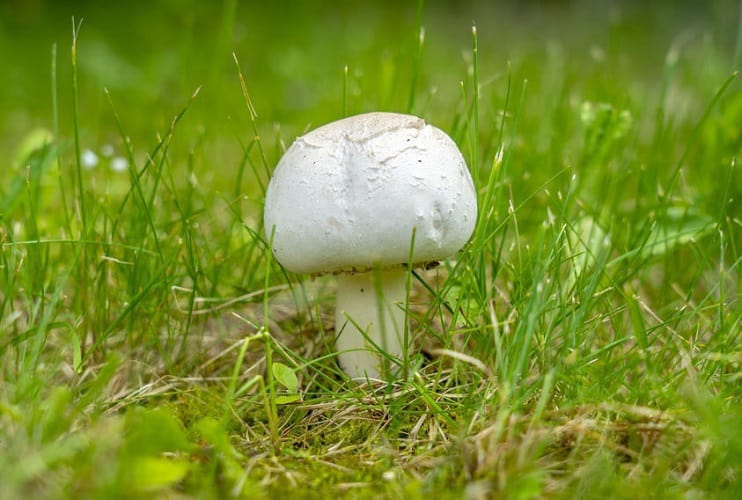 You might know that vitamin A reduces oily skin by binding to special retinoid X receptors, like a lock and a key. You might know about 5-alpha reductase, the enzyme that blocks the pore-clogging androgen DHT.
You might know that vitamin A reduces oily skin by binding to special retinoid X receptors, like a lock and a key. You might know about 5-alpha reductase, the enzyme that blocks the pore-clogging androgen DHT.
But what if there was a master switch, a rusty old lever which hasn’t budged in 20 years which decreases all oily skin pathways?
There is, and it’s called niacin, or vitamin B3. Your oil pumping sebaceous glands are lined with HCA2 receptors. They used to be called “niacin receptor 1”, as they’re the receptors through which niacin exerts all its bodily effects. For example, deactivating HCA2 completely destroys the niacin flush, the hot rush of blood to the face accompanied by a tingling sensation.
As for acne, topical niacin reduces sebum production in humans and isolated cells, in concentrations of just 1umol. However, this receptor isn’t one individual pathway, like applying green tea. Instead, it corrects oily skin regardless of the root cause.
For example, testosterone is the classic, stimulating androgen receptors in the skin. It’s why bodybuilders complain of oily skin. Anandamide is your body’s own cannibinoid. It’s structurally related to THC in cannabis, and stimulates the same cannabinoid receptors, but it increases sebum production through a pathway called PKAR. Arachidonic acid is the raw material for immune system chemicals. Arachidonic acid is a master recipe for chronic inflammation, but by lowering a pathway called PPAR-y, it has a side hustle in oily skin too.
Niacin can counteract all three of these oily skin problems. It’s the best universal master key we have so far.
Two – citric acid’s mouldy origins
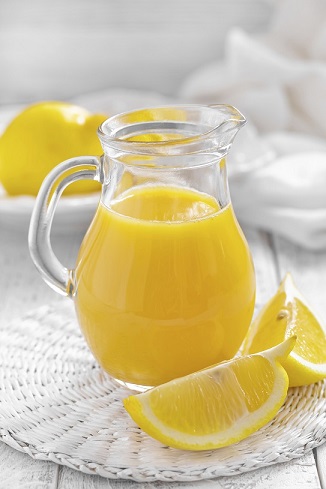 There are two forms of citric acid in this world. The first was lovingly squeezed by a kindly local farmer with his bare hands, who was once a real guy (although nobody is quite sure) but is now immortalised on the front of an orange juice carton. The second is spewed out by black mould.
There are two forms of citric acid in this world. The first was lovingly squeezed by a kindly local farmer with his bare hands, who was once a real guy (although nobody is quite sure) but is now immortalised on the front of an orange juice carton. The second is spewed out by black mould.
In short, most people assume that citric acid is a natural ingredient when they see it on a soup mix or sport’s drink ingredient list. But 99% is actually artificial.
Here’s what happens: scientists scrape some black mould off the back of a bus shelter in London (they actually purchase it from a biobank). They feed this mould glucose, its favourite fuel source, which it eagerly licks up.
Through fermentation, the mould spews out citric acid as a by-product. This is scooped up by the usually Chinese businessmen (59% of global citric acid production) and sold to cosmetics and food companies all over the world.
The mould species is aspergillus niger, a common contaminant of coffee beans. The basic procedure was discovered in 1917, but since then, it’s been taken to strange new places. Mad scientists have genetically engineered a.niger to consume more glucose and make more citric acid from it, doubtlessly accompanied by a thunderstorm and a flash of lightning the moment they made the changes.
The connection to acne is that citric acid sensitivity is very common. The worry is that the toxic proteins of the moulds stay in their offspring.
Three – p.acnes’ radio receptors
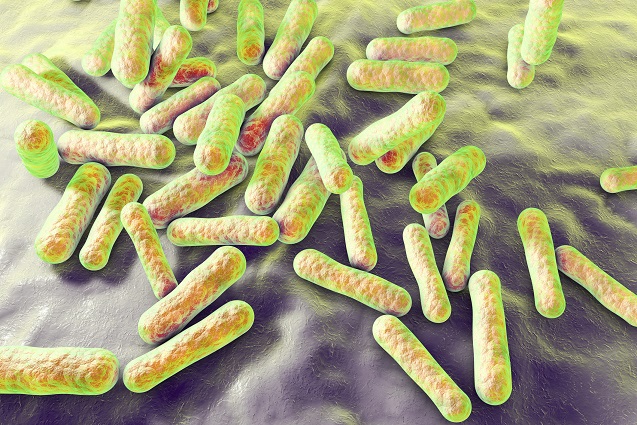 Almost everyone knows that stress causes acne, but few are sure exactly how.
Almost everyone knows that stress causes acne, but few are sure exactly how.
Its main powers tend to be indirect. There’s damaging collagen, which the stress hormone cortisol breaks down, and there’s digestive inflammation, loosening your all important gut barrier. But there’s one secret power that happens almost instantly: making acne bacteria more aggressive. This discovery was decades in the making, as e.coli was known to absorb adrenaline into its DNA. S.aureus also becomes more infectious in chronically stressed hospital patients.
Just recently, they identified receptors in the cell membrane of p.acnes which fit catecholamines like a glove. Specifically, the two catecholamines are the heart-pumping epinephrine (adrenaline) and norepinephrine.
There are massive gaps in our knowledge, but it looks like these classic fight or flight hormones make p.acnes harder to remove. They increase p.acnes’ biofilm formation, a glue-like structure, without making individual bacteria cells more aggressive.
Interestingly, these stress hormones can make p.acnes 11% more skilful at increasing oil production.
Different strains also react differently. Catecholamines are particularly concentrated in the deep chasms of your skin pores, where p.acne 1a congregates, unlike the wide expanses of your cheeks where family 2 lives.
Catecholamines and p.acnes have a direct radio channel, hatching schemes to create new pimples. Within seconds of your boss berating you for buying him the wrong flavour of donut, stress hormones will start slotting into p.acnes receptors.
Four – cinnamon the gut cleanser
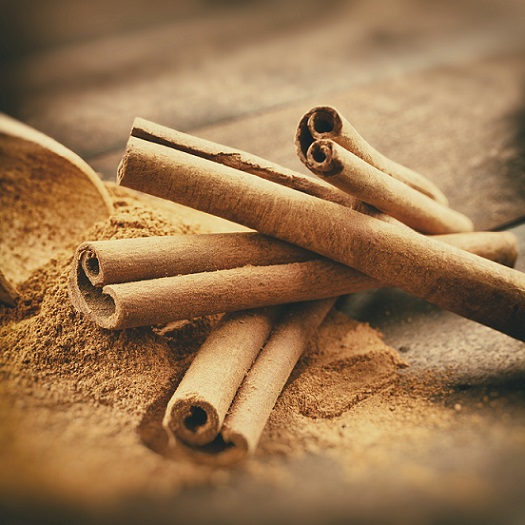 What is cinnamon best for? You might say flavouring a delicious bun with coffee. Coffee houses might say its smell, for pulling in unwilling passersby like a tractor beam.
What is cinnamon best for? You might say flavouring a delicious bun with coffee. Coffee houses might say its smell, for pulling in unwilling passersby like a tractor beam.
The real answer though, is wiping out nasty gut pathogens.
Just like skin bacteria, gut bacteria is one of the great mysterious territories of the acne universe. What we know is that heliobacter pylori and friends can pump out inflammatory molecules, decrease nutrient absorption, and crowd out friendly strains.
Most people have less than optimal gut flora, and that’s where simple cinnamon comes in. In experiments on humans, cinnamon has inhibited the yeast candida in 72% of people. It even beat candida specimens resistant to the antifungal medication fluconazole, a natural shortcut. Cinnamon can make yeast cells burst, damage their inner organelles, and create irregular hollows on the cell surfaces.
Then we have clostridium difficile, a bacteria notorious for inflaming the cells of the large intestine, by relentlessly pumping out inflammatory toxins. A cinnamon compound called cinnamaldehyde can target C. difficile directly. It’s almost guaranteed to deal with more species, possibly including H. pylori.
If you’re on a gut healing protocol, but restricting sugar and FODMAPs is taking too long, cinnamon will slam the accelerator down. Your “unexplainable” acne may swiftly disappear.
Five – the secret of sebaleic acid
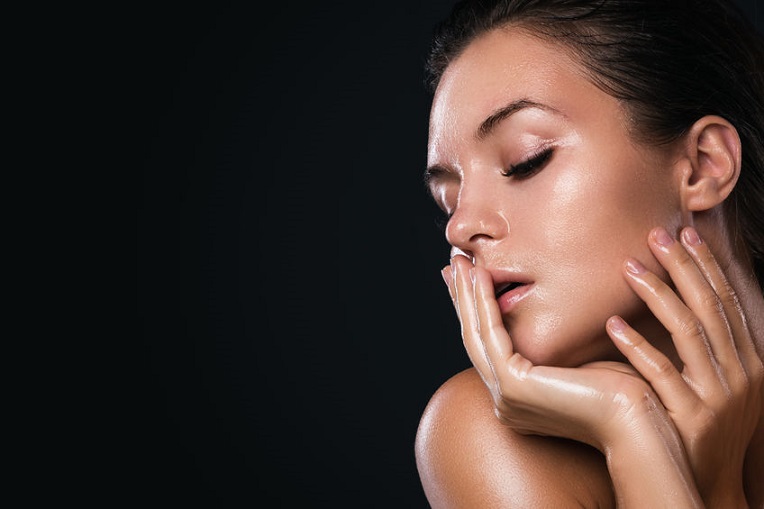 In 2020, it’s reasonably common knowledge that vitamin E is great for acne, with serums bursting out of your computer screen nonstop from amazon. It’s less known that acne patients have less vitamin E built into their oil than clear-skinned people…
In 2020, it’s reasonably common knowledge that vitamin E is great for acne, with serums bursting out of your computer screen nonstop from amazon. It’s less known that acne patients have less vitamin E built into their oil than clear-skinned people…
…and it’s even less known that sebaleic acid is missing from their skin’s oil. 99% of people don’t know the name, including most dermatologists.
In 1973, some acne-clearing scientists tested 57 fatty acids (linoleic acid, palmitic acid) in an acne patient’s oil sample. Only one was overly increased, but there was no entry in their databanks. They named it 5Z,8Z-octadecadienoic acid, before their tongues were tied in a knot and they renamed it sebaleic acid.
They soon discovered that sebaleic acid makes up the phospholipid layer of sebocytes when they burst to release oil onto the surface of your skin. But then there was radio silence. Little was heard of sebaleic acid for 45 years. Did it make a triumphant return? No – it never did.
To this day, we only know two things. Firstly, that sebaleic acid is increased in acne patients’ skin oil. And secondly, that sebaleic acid serves as the raw material to manufacture immune system neutrophils. We warn of these bad boys quite often. Neutrophils generate healthy free radicals, but easily get out of control. Sebaleic acid can increase 4 free radicals, including 5-HODE and 5-oxo-ODE.
Six – a cucumber-flavoured alcohol shield (cucumber)
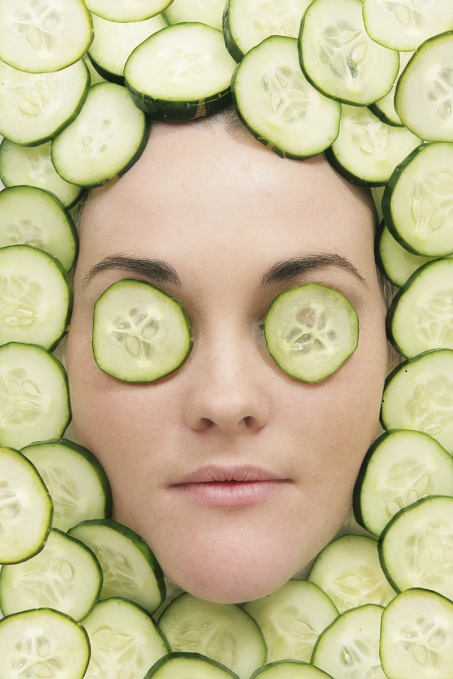 The cucumber is commonly called a bag of water. It looks unexciting and its flavour does not exist.
The cucumber is commonly called a bag of water. It looks unexciting and its flavour does not exist.
Yet hidden inside its green skin is a power that the drunken pirates of 18th century legend would scour the seven seas to find. It’s alcohol protection, and the protection extends to your skin.
Cucumber is mostly useless for acne, with few vitamins or antioxidants to speak of. How it gained its role as a dark circle cure is a complete mystery, but what cucumber can do is increase the enzyme acetaldehyde dehydrogenase. It does so better than any other vegetable, with 87.25% increases.
ALDH detoxifies acetaldehyde from the bloodstream, the first breakdown product of alcohol in the liver. Acetaldehyde breaks down into acetate, and with it go the head-pounding, voice-slurring, nausea-feeling powers it’s famous for.
Its acne abilities also disappear, namely glutathione depletion and massive inflammation. Your evening beer or ten will simply bounce off your skin. Nobody has any idea how this power works.
Increasing ALDH is the one acne power the cucumber is useful for.
Seven – decaf coffee and mycotoxins
 Are you someone who’s shunning coffee because of breakouts, with great sadness?
Are you someone who’s shunning coffee because of breakouts, with great sadness?
It’s possible that caffeine is behind it. Maybe you have a random sensitivity, or maybe you’re drinking too much. Maybe you have the CYP1A2 gene that doubles caffeine’s half life in the bloodstream.
However, the other villain behind caffeine sensitivity is mycotoxins, and in decaf coffee, these invisible enemies are much worse. Mycotoxin are offensive weapons produced by moulds against bacteria, their natural rivals. We’re the collateral damage, and aspergillus moulds (the same that make citric acid) often infect coffee beans.
The thing is, the coffee plant has its natural weapons as well. Two can play at that game, and its anti-mould solution is caffeine. It disrupts transporters in the mould’s cell that uptake glucose, its natural energy source, decreasing glucose absorption by 50%.
In a petri dish, caffeine can cripple aspergillus mould growth. Interestingly, its closely related alkaloid theophylline doesn’t achieve this. It’s a different power to cinnamon, which warps the yeast’s structure.
The result? By the time we reach the freshly poured cup in your kitchen, decaf coffee is much richer in mycotoxins (maybe rich isn’t the right word). Some samples have averaged at 50% more.
This doesn’t outlaw decaf coffee for an acne sufferer, because most coffee only has low contamination to start with. Nevertheless, this is a little known shady side of decaf coffee.
Eight – blackcurrants and their youth powers
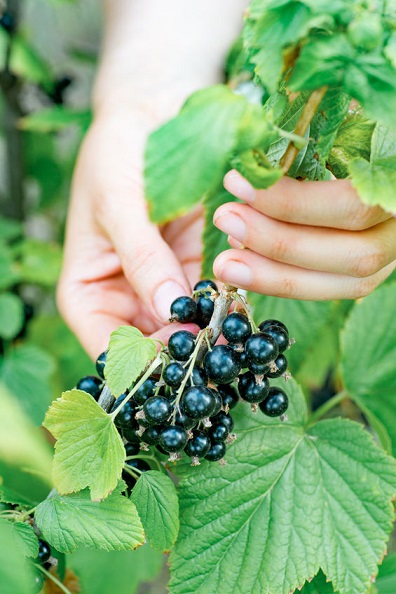 When you think of anti-ageing supplements, the first to mind might be collagen supplements or eating bone broth. There’s also resveratrol from drinking red wine, although let’s face it, that’s just a flimsy excuse.
When you think of anti-ageing supplements, the first to mind might be collagen supplements or eating bone broth. There’s also resveratrol from drinking red wine, although let’s face it, that’s just a flimsy excuse.
Now we have a less famous contender – the blackcurrant, resident of gardens all over England. In Europe, it’s beloved, but some Americans may not have heard of blackcurrants, let alone their collagen-boosting powers.
It turns out that blackcurrants are master manipulators of the human genetic code. For example, topical application can decrease MMP12 1.5 fold. That’s the skin enzyme which recycles elastin; increasing MMP12 is partly how UV radiation ages you. COL31A can increase 1.5 fold while HAS3 can also increase 1.5 fold. The former stimulates type 3 collagen production while the latter creates the natural moisturiser hyaluronic acid.
Few of the customers buying hyaluronic infused creams realise that blackcurrants stimulate your own production. 200 years ago, none of this could have been discovered, although a wise old village elder probably knew.
Blackcurrant controls these genes using mildly estrogenic compounds called cyanidin-3-glucoside and delphinidin-3-rutinoside. Blackcurrant is among the best sources of these obscure substances, which fit the estrogen receptor beta (ERb) perfectly.
Nine – kale and spinach for sunlight
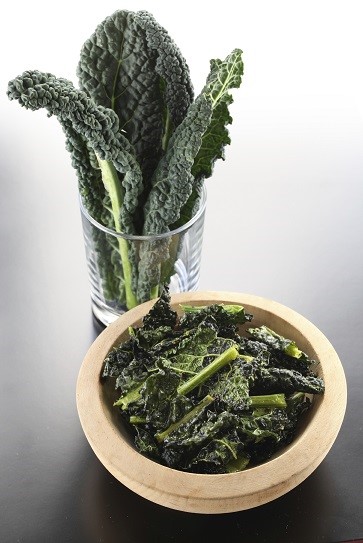 It’s no secret that kale is a superfood. It’s popularity has exploded into kale chips, kale ice cream, kale muffins, kale cocktails. Simply pouring kale juice on a bullet wound can cause it to seal up with a cleansing white froth.
It’s no secret that kale is a superfood. It’s popularity has exploded into kale chips, kale ice cream, kale muffins, kale cocktails. Simply pouring kale juice on a bullet wound can cause it to seal up with a cleansing white froth.
Likewise, spinach has been the poster child of huge forearms for decades now (it’s interesting how a fictional cartoon works better than most advertisers can ever dream of). However, what’s less known is that both vegetables can protect your skin against sunlight. It’s caused by a compound the two share – lutein.
Kale has 19.698mg per 100 grams (boiled) while spinach has 15.691mg (boiled). Lutein is the single most important antioxidant for protecting your eyes, but compared to other antioxidants it is known to accumulate in the skin particularly densely.
There, it provides an armour against UV radiation. Lutein stops sunlight from creating lipid peroxides, free radicals, malondialdehyde, and 8-OHdG. All are links in the chain between scorching sunlight and red and blotchy acne.
Studies have shown that simply eating lutein increases sunlight defences within weeks. Beta-carotene (plant form vitamin A) does the same, but its fellow carotenoid lutein is less known. Two might be better than one, as they probably specialise in subtly different free radicals.
Only Brussels sprouts can really compare (1.541mg), but there’s a small problem – they’re Brussels sprouts.
Ten – apple and grape juice are a notch above
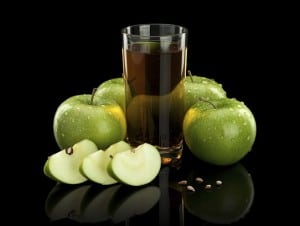 Fruit juice, despite the word fruit in the name, is not good for your health. It definitely isn’t one of your five a day, due to the free-floating, rapidly absorbed sugar swimming in it.
Fruit juice, despite the word fruit in the name, is not good for your health. It definitely isn’t one of your five a day, due to the free-floating, rapidly absorbed sugar swimming in it.
Happily, the public at large is starting to realise this now. The message is sinking in, but a more obscure fact is that apple and grape juice are significantly worse for your acne. In an unlikely alliance, sugar joins forces with the toxic heavy metal arsenic. This heavy metal was a well respected pesticide, until it turned to evil; it was banned in the early 2000s due to its cancerous effects.
It is limited by the US Environmental Protection Agency (EPA) to 10 p.p.m., but it still lurks in old orchards, and it will for decades more. For some reason, grape vines and apple orchards absorb particularly high amounts through their roots.
One time, Consumer Reports analysed 88 juice samples. Apple and grape juice contained the most arsenic, and 8 apple juice samples exceeded 23ppm. Apple juice lovers may have 19% more arsenic in their urine than other people.
Occasionally, the arsenic story will appear in a hard-hitting news story, people will gasp, but then it will be forgotten again, gradually gaining freshness for reuse as journalism fodder.
The problem for acne is simple – arsenic increases the pore-clogging keratin, which is surprising. Heavy metals normally specialise in inflammation and melting your antioxidant reserves.
It’s strange, but nevertheless, arsenic is an acne villain which you cannot see and cannot bargain with, and it doesn’t appear on any nutrition table at the government’s request. Arsenic is an acne villain that plays by its own rulebook, answering to no man or woman.
It’s not that smart though. If you love apple or grape juice, then don’t worry: going organic will put the arsenic threat to sleep. The apple orchards must have not just 100% organic practises today, but many years in the past.
Conclusion
The world of acne strategies stretches far off into the distance. This is a sample of the strange facts and connections being discovered.
Some we can act on, others we can’t, but in 10 years, things could be different. It also shows how crazy it is that the traditional dermatology bodies are stuck so firmly in place. There are new developments in the natural arena constantly, but antibiotics and accutane are order of the day.
When they are aware, they tend to enter analysis paralysis and say “further studies are required” while twiddling their thumbs, despite never being so cautious when they originally introduced the drug accutane. Hopefully things will change soon!
Thanks for reading!
